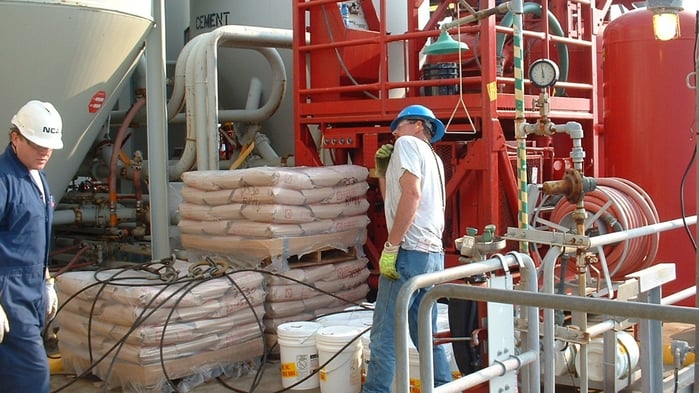
Since the first use of cement in oil wells in 1906 the product has been central to well integrity. Now the oil companies are searching for new and better ways for zonal isolations. In this blogpost, I will tell you about the trends in zonal isolations and alternatives to cement.
You really don´t want change in pressure or visual gas leaks on the seafloor or surface. Sustained casing pressure or annulus pressure build up will force you to shut down the drilling. This again will lead to lost production or delays in the drilling operation.
If you are a drilling operation manager, you know the extra costs of delays and shutdowns. We don´t want that to happen!
A long history of cement
During the drilling process, you will have to do several tests to make sure that you have correct pressure and a nonleaking well. Cementing is central to the discussion of zonal isolation and well integrity because cement typically provides at least one barrier in a well and is a component of the barrier envelope or barrier system during well construction and the operational phases of the well.
Gunnar DeBruijn at Schlumberger is a member of the JPT Editorial Committee. He has been working with cement in North America and in deep water around the world supporting cementing and well integrity initiatives.
“There is a long history of industry standards for cementing, with the American Petroleum Institute establishing the first cementing standard in 1948. In the last several years, regulations have been updated and rewritten worldwide. In every jurisdiction, we can point to a regulation or industry standard that affects drilling and cementing operations. This regulatory attention compels us to double-check our practices, continue effective techniques, and develop technology where improvements are needed.Technology is also focused on improving verification of cement placement and barrier achievement. Cement evaluation, including wellsite observations during cement placement, pressure tests, and logging techniques, are part of the well-integrity equation. These enhanced evaluation methods provide confidence that zonal isolation and well integrity are achieved.”
This, you must be aware of
Why is this important? Because working as an operation manager in an oil company and being in charge of purchasing, you must be aware of:
• your company's requirements for sealing and barriers. These will typically be linked to regulatory requirements
• the established processes that your company currently have regarding zone insulation, and typically know the specific challenges they have
• alternative solutions and suppliers that can contribute when the issue arises
• the cost the company has with such problems, and be interested in understanding, or be working with partners for improved or new solutions
When a major north sea operator had challenges with loose conductors due to cement fracturing the soft formation from the seabed and downwards, alternatives was required. A solution which could both be thin and penetrable through a mix of cement pieces and formation was required. It also needed to be heavy enough to displace existing mud and sea water without fracturing the formation. To combine these requirements, it became evident that an alternative to cement was required. A material with low viscosity and high density but still flexible and strong when set would be a better sealant solution.
Searching for alternatives
Cement in different qualities has been the answer to well integrity for more than hundred years. Now there are a lot of activities around the world looking for other ways to deal with the same problems. It is challenging today's technologies. There are several collaborative projects across company- and land borders that look for better solutions where long-term sealing is central.For instance, major oilfield service companies, providing cementing solutions, also works to find better solutions to their own cement.
They are looking at resins in or in combination with their cement.
Wellcem has provided information to several Joint Industry Projects focusing on alternatives to cement. Always looking for solutions that:
• are more flexible, plastic, so they do not crack or break up so easily
• more lasting and better sealed, also when there are changes in pressure and temperature in the wells
• can be delivered, placed faster - less cost
• gives a greater likelihood of a good result
This is because it takes a lot and it costs even more when a well has to be shut down due to leakage. Cement is still the dominant product used to seal oil and gas wells. It is challenged in a number of areas, and many players in the oil industry are looking for more flexible and environmentally friendly alternatives. Resins are more often included in the assessment of new projects. You will need to learn more about these products and what trends are now entering the market.


